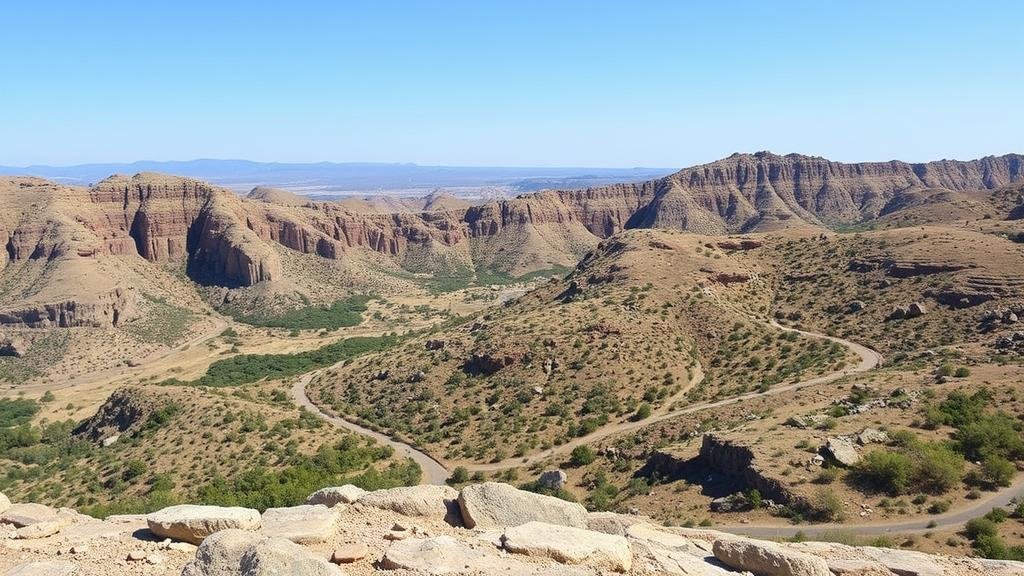Spotting Evidence of Prehistoric Quarry Sites in Rocky Hillsides
Spotting Evidence of Prehistoric Quarry Sites in Rocky Hillsides
The study of prehistoric quarry sites offers valuable insights into the lives of ancient humans, their material culture, and the evolution of tool-making techniques. Spotting these sites in rocky hillsides requires a combination of geological knowledge, archaeological acumen, and an understanding of ancient human behavior. This article elaborates on the methods and implications of identifying prehistoric quarry sites, supported by real-world examples and research findings.
The Importance of Prehistoric Quarries
Prehistoric quarries are locations where ancient peoples extracted raw materials for tool production. are significant for several reasons:
- They provide evidence of technological advancements over time.
- They reveal patterns of settlement and migration based on resource availability.
- They contribute to understanding social organization and trade networks among prehistoric communities.
For example, the large basalt quarries in the southwestern United States exhibit evidence of extensive tool-making activities by the Ancestral Puebloans. Archaeologists have documented hundreds of thousands of artifacts, including bifaces and flake tools, which offer insights into their hunting and gathering practices.
Identifying Geological Indicators
Recognizing the geological context of rocky hillsides is crucial in spotting evidence of prehistoric quarries. Various attributes indicate that a site may have once served as a quarry:
- Types of Rock: Certain rocks, like flint, chert, and obsidian, are preferred for tool-making due to their ability to be shaped easily. Observing the predominance of these materials can signal a quarry site.
- Debris Fields: Areas with an accumulation of stone flakes or debris suggest that stone was worked and shaped in that location. The presence of cores–larger pieces of stone from which flakes have been removed–further supports this observation.
- Environmental Shifts: Geological formations that show signs of erosion or weathering may hint at ancient quarry sites, as prehistoric humans often chose accessible rock faces.
For example, the basalt outcroppings on the Columbia River Gorge have been extensively studied. Archaeologists have found systematic flake removal patterns that indicate early Native Americans selectively quarried these sites due to the high-quality basalt available.
Archaeological Techniques for Site Detection
Several techniques can be employed to identify potential prehistoric quarry sites in rocky hill environments:
- Aerial Surveys: Drones and aerial photography can help visualize the landscape, revealing patterns that may not be evident from the ground.
- Ground-Penetrating Radar (GPR): This non-invasive technique can provide information about subsurface features, potentially indicating prehistoric quarry pits or other archaeological structures.
- GIS Mapping: Geographic Information Systems (GIS) can help analyze spatial relationships and identify trends related to resource distribution and site location strategically.
A notable study conducted in the Andes utilized GPR to detect subsurface features that indicated the presence of a significant lithic extraction site, confirming the areas historical importance.
Case Studies and Real-World Applications
Numerous case studies illustrate the effective identification of prehistoric quarry sites. Skidi Pawnee tribes quarry sites in Nebraska are exemplary, revealing the selection of local limestone for tool production. Researchers have uncovered not only the tools but also the spatial arrangement of quarried materials, providing deeper insights into the communitys tool-making practices.
Also, the discovery of a prehistoric quarry in the Sierra Nevada mountains has shed light on the Native American use of obsidian stones. Researchers have traced the movement of obsidian artifacts, revealing trade networks that stretched across hundreds of miles.
Conclusion and Actionable Takeaways
Identifying prehistoric quarry sites in rocky hillsides is an intricate process requiring a multidisciplinary approach. By understanding geological contexts, applying appropriate archaeological methods, and considering real-world case studies, researchers can better document and interpret the significance of these sites. This work not only enriches our historical understanding but also informs conservation efforts to protect these invaluable archaeological resources.
To contribute to this field of study, those interested can:
- Volunteer with local archaeological organizations to participate in field surveys.
- Engage with academic literature to build foundational knowledge of prehistoric technologies.
- Attend workshops or training sessions focused on geological and archaeological site detection.



